Towards the end of December last year I emailed Jonnie Fisk to express my interest of volunteering at Spurn for the following autumn after I had seen the opportunity being advertised on Twitter. I knew it was a bit of a long shot but decided that if I didn't start applying for these opportunities then I was never going to get anywhere. By March I had heard back on their decision and I was not surprised to be told that I was not being offered a volunteer placement for autumn 2022. However, a day later I received another email explaining that I would now have the opportunity to do an interview over Zoom for the position. This would be my first ever interview and I remember being very nervous for it. Despite this, I was relatively happy with how it went, although I did get a few of the identification questions wrong! The following week I received the fantastic news that I had done enough in the interview to earn a place as one of the autumn residential volunteers at Spurn for 2022 and that I would start on the 15th of August and leave on the 30th of September. As soon as I had finished my A Level exams in late June I began to revise the Collins Bird Guide and learn bird calls that I had little experience with to ensure that I arrived at Spurn with as much knowledge as I could.
To break up the long journey by public transport I stayed in Hull for a few nights. On the morning of the 15th I got a bus to Withernsea, which is where I would meet Paul Willoughby for the first time. He had kindly offered to pick me up and give me a lift the rest of the way. On the car journey there I explained to Paul my ambitions of finding a few rarities during my time volunteering but also said that I was just looking forward to the good birding as this was my first time at a true migration hotspot. As we approached Spurn I was welcomed by the sight of a huge flock of Golden Plovers flying around by Sammy's Point. I told Paul the shocking news that until then I had only ever seen one Golden Plover. Once we arrived at the Observatory I was left for a little bit just to settle in. Tom (one of the Little Tern volunteers) had just had a spell of Covid and so I temporarily had to stay in the Observatory rather than joining him in the volunteer's cabin straight away. I was put up in Alpine - the rooms at Spurn are named after species of Swift that have been recorded there - and whilst I was unpacking a few of my things I heard the scream of a Red Kite so I poked my head out the window and there it was flying straight past the Obs. At the time I hadn't particularly appreciated the significance of this but I now know that this was my only Red Kite of my entire stay.
Paul then took me for a quick walk around part of The Triangle so that I could get my bearings. He first showed me the Obs Garden and the volunteer's cabin that I would move into soon. Some extremely vocal and sometimes deafening Sparrowhawks had a nest right nearby. We headed on into Church Field, through North Field and then over the road into Sykes Field - where I would spot my first Spurn Pied Flycatcher - before looping back to the Obs via Corner Field. By early afternoon Bethany McGuire had arrived. She would be volunteering for the same duration as me. Despite only just arriving after her long drive up from Lincolnshire, Beth was keen to head down to Kilnsea Wetlands and Beacon Ponds with myself and the Spurn Assistant Warden, Rob Hunton. Rob showed us the two Little Tern huts where Beth and I would do some shifts to help the Little Tern team monitor the colony and protect the final chicks from predation. For my first day I recorded 83 species, which included 4 lifers: Knot, Spotted Redshank, Little Tern and Common Scoter. Full eBird list
here.
The following day I tallied up another 3 lifers in the form of a White-rumped Sandpiper, a Little Stint and 3 Curlew Sandpipers, all of which were on Beacon Ponds. On the 17th I did my first ever proper seawatch and so unsurprisingly was treated to another load of lifers, this time being Great and Pomarine Skua thanks to the help of Paul, Manx Shearwater, Sooty Shearwater (self found), and 2 juvenile Black Terns flying north, which I picked up after a tip-off on the radio from birders in the seawatching hut down by The Warren - Paul and his son Thomas, Terry (local birder), Beth and I were all setup by Sandy Beaches Caravan Park. I managed 96 species on the 17th and my eBird list can be seen
here.
On the 18th, Rob took Beth and I down the peninsula for our first time. On our way out, we bumped into Paul and Thomas at Middle Camp. They had just seen a "Shrike-sized bird" drop into the vegetation by the side of the road. Unfortunately they had to head back but the three of us continued to look for a while. We had just given up and started to continue our walk down to the point when Beth drew our attention to a bird that had just hopped out into the road. It flew back into vegetation before any of us managed to get anything on it but we had all clearly seen where it had landed. Beth walked past it and then doubled-back on herself whilst Rob and I stood poised and ready for it to come towards us. It did exactly that and Rob got just enough on it to confirm it was a Wryneck! Another lifer for myself.
The morning of the 19th started very well. I was just stumbling through Church Field first thing and as I approached the ringing lab a Nightjar flushed off of a bench and flew low and through towards Kilnsea Churchyard. I walked through in the general direction and found the warden Paul Collins (PC) by his ringing nets. Unfortunately the one net that the Nightjar looked set to fly straight into wasn't open. A short seawatch from the seawatching hut a bit later on produced 7 Red-breasted Mergansers flying past in a line - my 14th lifer in 5 days! In the evening I was on Little Tern duty from 6pm-10pm. At 19:38 I saw my best and also most frustrating find. A Cory's Shearwater flew south past Beacon Ponds about three-quarters of the way out to the wind turbines. It was just too distant for my camera to get anything on it so I just had to watch it slowly drift past whilst trying to note as many features as possible and make absolutely sure that it wasn't something else. I put the news out over the radio in the hopes that anyone at the seawatching hide would pick it up, but by the time I had done so it was probably almost level with them if not past them already - I had watched it until it had pretty much disappeared from my view. One that got away!
It took until the 22nd to get my next lifer. Beth and I had only just got back to the volunteer's cabin after an afternoon cutting back the reeds on Canal Scrape when we heard the news of a juvenile Red-necked Phalarope on Beacon Ponds. Being a lifer for both of us, we decided to head over for it despite still being covered in mud and pond slime - priorities! On the 27th Beth and I were treated to better views of a Wryneck, this one sunning itself in the garden of local birder Mark Andrews, who kindly allowed access for other birders.
 |
| Wryneck |
On the 31st of August I had found my best bird yet and this time I managed to get a photo and it was multi-observed. Whilst I entered Sykes Field from Corner Field to do my final point count of the morning around the Triangle I immediately saw a warbler fly across the path in front of me. I managed to get my binoculars on it as it hopped around low in the trees and the feature that I noticed straight away was a big silvery wing panel. My mind instantly jumped to Icterine Warbler. I fired off a few record shots and then went back to binoculars to try and get a better view. But then a Willow Warbler hopped out and made me question everything that I thought I had just seen. After reviewing the photos I had got and deciding I had definitely just had an Icterine Warbler I reached for my radio to put out the news. But as I pressed the button to speak the radio made a different noise than what I was used to and then was followed by the voice of Colin Bushell. He had just got onto the Icterine Warbler round the corner from where I was stood. I walked round to meet him and explain that I had already had it and got photos. I also met Jacob Spinks for the first time, who came out from his nearby caravan to come and see the Icterine. This was Spurn's first Icterine Warbler of 2022 and I felt like I had finally found something good enough to prove myself to the very knowledgeable and experienced birders at Spurn.
On September the 1st I finally saw my first Spotted Flycatcher of the year! It was by the picnic tables near the end of the point whilst I was out doing the point counts. In the afternoon Rob, Beth and I headed out to Sammy's Point to see a Wood Warbler that was located in the 3rd paddock. On route I finally got to see the 1st winter Citrine Wagtail that had been found on the 30th of August, which along with the Wood Warbler was indeed another lifer for me. The 2nd was also another 2 lifer day. 6 Red-throated Divers during a morning seawatch became the first diver species I had seen and late in the evening Rob and I headed out to see the 1st winter Red-backed Shrike at the Canal Bushes. I didn't see any lifers on the 3rd but I did find a Wryneck down the peninsula just south of the Lighthouse. On my walk back to the Observatory it was quite amusing to watch people trudging along the breach, dreading the longish walk out to see it. I was also shocked to bump into Jake Klavins, who I knew from back home as he used to be warden at The London Wetland Centre. On the 4th Beth and I went to Beacon Ponds to see the juvenile Red-necked Phalarope again, which since the 1st had been joined by a second individual. Kate Fox arrived that evening as the 3rd volunteer of the autumn. On the 5th a third Red-necked Phalarope had appeared and seeing them was a perfect way for Kate to end her first full day at Spurn.
An early morning Barn Owl showing well (photo attempts did not do it justice) around Canal Scrape on the 6th was a good start to the day and in the afternoon the day got even better when Beth and I managed to see a Purple Sandpiper on the rocks by Sandy Beaches. On the 7th I got distant views of my second ever Osprey, which was circling over The Triangle whilst I was still at the High Tide Shelter at the south end of the breach. Back in the Obs Garden I got a view of the tail pattern of a Pied Flycatcher, which caught my interest. The white appeared to extend to and bend round the tip of the outer tail feather. I recalled seeing something in the Collins Bird Guide that mentioned extensive white in the tail pattern of Semicollared Flycatcher. But I was aware that the likelihood of it being that or a Collared Flycatcher was low and I also did not know enough about the feature and knew that there must be a lot of variation too. After raising my interest to a few others, I was eventually convinced to put my photos on the WhatsApp Group just in case it was something more than a Pied Flycatcher. Instantly people with a lot more experience and knowledge set me straight and explained that tail pattern, particularly in 1st winter birds (Collins describes for adult males), is extremely variable just as I had expected. By this point though the bird had finally called and revealed its identity as a certain Pied Flycatcher. PC then arrived and explained in person that it's a common thing to see in Pied Flycatchers and that was the end of that. An extremely good learning experience for myself though so I am happy I bothered to scrutinise it even if it was very stringy lol.
Friday the 9th brought the opening night of Migfest 2022, and the morning had already showed good signs of decent migration with a Honey Buzzard flying south, which I managed to watch in my scope for 10 minutes as it powered down the peninsula to the end of The Point. On the Saturday I started off doing point counts around The Triangle before spending some time on the Tower in the Obs Garden as part of The Tower Birdwatch, with the aim to collectively record as many species as possible from the Tower across the weekend. By the end of the weekend, 104 species had been recorded from the one watch point! This included my personal star bird of Migfest 2022 - a 2cy female Pallid Harrier. I was helping lead a BTO Young Birders walk and we were in the Canal Scrape hide when the news came over the radio of a ringtail Harrier flying south from Kilnsea Wetlands. We hurried out of the hide to get a better view of the sky. Fortunately I bumped into Beth, who was without a radio for the day and therefore totally unaware of what was heading our way. Now stood in the YWT car park, I picked up the bird circling over Southfield Farm after it had been called out on the radio over North Field (the host field for Migfest this year). At this point, the identification of the bird had still only gone as far as ringtail Harrier. I got my scope on it and admittedly the first thing I said was, "that's not a Pallid Harrier!" I had happily ruled out Hen Harrier but was too hasty to come to the decision of Montagu's. The foggy conditions meant that I was struggling to get many more features on the bird, so I got some photos on my camera and decided to try and identify it that way instead. On review of my semi-decent photos, the lack of a conspicuous collar still stood. But then I realised that the bird wasn't a juvenile, but I was confused as it also didn't look quite adult, which is what others had been saying. I suggested the idea of a 2cy bird to some of the young birders with me. The photos were slightly underexposed and so this also made it hard to judge the features of the underwing, particularly the secondaries, and there was heavy moult in the primaries. I felt slightly better about not being able to make my mind up when I heard that Birdguides and Rare Bird Alert had put it out as different - one going with Pallid and the other with Monty's. When I was eventually able to brighten the pics back at the Obs the final decision of it being a Pallid Harrier had already been announced, but I was happy to see that my photos showed enough detail for me to identify it confidently as a Pallid myself.
.JPG) |
| 2cy female Pallid Harrier |
The morning of Monday the 12th was spent by many recovering from the late and rather crazy night at Sandy Beaches, where all volunteers that helped celebrated the end of a successful Migfest. At 1am I saw my first ever Brimstone Moth, which was on the outside of the moth trap by the Ringing Lab. I finally got to bed at 3am and after a few hours sleep I headed down the peninsula with Sam Levy and Keir Chauhan, who had also come up to Spurn to help out at Migfest. Despite the severe lack of sleep, I seemed surprisingly energised and managed to spend most of the day out (11 and a half hours). We saw my second ever Short-eared Owl, a very tame Tree Pipit and a Black Redstart. The last bird in a flock of Yellow Wagtails flying south was a Blue-headed Wagtail, which Sam just happened to photograph as it went past. On the evening of the 13th Paul W kindly let Beth and I into his to watch for Badgers that had recently been visiting his garden. By the end of the evening we had seen 2 Badgers and I was very excited as these were my first ever and I've always wanted to see them. I then lifered Pink-footed Goose on the 14th when flocks first began to arrive on the east coast. Unfortunately Sam and Keir just missed out as they had already left. That afternoon whilst helping out with YWT to take down the electric fence on the breach I spotted an adult pale phase Pomarine Skua flying south - my first adult Pom and my word what a bird!
The 16th of September brought the arrival of the first Spurn Yellow-browed Warbler of the autumn, which was trapped and ringed by Simon Davis in Church Field. Beth and I were just outside the volunteer's cabin when the news on the radio came through so we dashed round to see Simon. It was a great way for Beth to see her first ever Yellow-browed Warbler. Later, Beth would get her second lifer of the day when a Rock Pipit showed well at Pallas's Pond. In the afternoon, Beth, Kate and I all headed off to see the Temminck's Stint that had been found at Kilnsea Wetlands - a lifer for Kate and Beth. We then headed off to the seawatching hut after hearing that many Sooty Shearwaters had been going past, which is where I would see my only lifer of the day when 2 Eider flew south. On the 19th the first few Redwings started to appear and when I was down the peninsula I found a Yellow-browed Warbler by the VTS Tower, which Collin, Dave Tucker and Gary Prescott (aka The Biking Birder) also managed to see. When I got back from the Peninsula I managed to catch a few brief glimpses of the Arctic Warbler that had turned up in the Crown and Anchor pub car park. A late afternoon walk led to good views of a Little Stint on Canal Scrape. The following day the stint had switched into a Temminck's that showed just as well. Late in the evening Beth and I went down to the High Tide Shelter to try and see the Little Bunting. It was a very skulky bird, staying low to the ground under dense vegetation. If it wasn't for the great help from Lance Degnan (Spurn legend) we might not have seen it, but eventually Beth spotted it close to our feet hopping around and feeding. On the 21st I experienced possibly my strangest birding experience I had at Spurn when a Ring-necked Parakeet got the locals rushing around to see it and get it on their garden lists. Being a very common bird back home and at Beddington it wasn't anything unusual to me, but of course as always it's the context of where the bird is that made it an intriguing sighting nonetheless.
In my final week volunteering, I finally saw my first ever Whooper Swans. Growing up I had always looked forward to the day that I saw another swan other than the usual Mute Swans of London, so despite the Whoopers being very distant they put a beaming smile on my face as I continued my morning walk down the peninsula. Friday the 30th was the final time that I would be going down the peninsula and right at the end of the point I was rewarded when a Red-breasted Flycatcher dropped in and landed right in front of me. I was gutted I messed up such a perfect photo opportunity but it was such a good view that I cannot complain too much. I also saw my first ever Mealy Redpoll in Sykes Field. For our final full day at Spurn on the Saturday, Beth and I enjoyed some absolutely quality views of a Snow Bunting on the breach, which made up for the earlier disappointment of finding out the hard way that we couldn't get a full English breakfast from the YWT centre! Whilst watching the Snow Bunting I bumped into Jake again, and Beth attempted to do a litter pick along the breach in extremely windy conditions (not a good idea it turned out) that was whipping sand at us. The Sunday morning we enjoyed our final mothing session before preparing to leave without getting too emotional (I failed miserably).
 |
| Snow Bunting |
 |
| Kate, Beth and me |
I am already missing the birding and mothing side of my time at Spurn, but perhaps missing the social side even more. Watching sunsets most evenings, gazing at the stars in the night from the Tower, evenings in the pub, learning so much and just sharing the whole experience with other like-minded people means that I have benefited from my time at Spurn in more ways than I had ever imagined. I will most certainly be visiting again! More photos from my time at Spurn can be seen on a separate post
here.
A special thanks to: Beth, Kate, Rob, Paul W, Thomas, Tom Wright, PC, Simon, Dave, Collin, Terry, Tony, Mark, Jacob, Jonnie, Lance, Harry Appleyard, Luke Nash, Daniel Branch, Tim Jones, Garry Taylor, Andy Bunting, Frank Moffatt, Gary Prescott, James Wilson, John Hewitt, Sarah Harris, Steve Exley, and everyone else for being so welcoming and helpful (sorry to anyone inadvertently missed off this list).
My Spurn 2022 Bird List:
Mute Swan
Whooper Swan (lifer)
Pink-footed Goose (lifer)
Greylag Goose
Canada Goose
Brent Goose (dark-bellied and pale-bellied)
Shelduck
Mallard
Gadwall
Pintail
Shoveler
Wigeon
Teal
Garganey
Tufted Duck
Eider (lifer)
Common Scoter (self found lifer)
Goosander
Red-breasted Merganser (lifer)
Pheasant
Red-throated Diver (lifer)
Little Grebe
Great Crested Grebe
Fulmar
Cory's Shearwater
Manx Shearwater (lifer)
Sooty Shearwater (self found lifer)
Gannet
Cormorant
Little Egret
Great White Egret (self found)
Grey Heron
Spoonbill
Osprey
Red Kite
Marsh Harrier
Pallid Harrier (lifer)
Buzzard
Honey Buzzard (lifer)
Sparrowhawk
Kestrel
Hobby
Peregrine
Merlin
Water Rail
Moorhen
Coot
Oystercatcher
Avocet
Little Ringed Plover
Ringed Plover
Grey Plover
Golden Plover
Lapwing
Knot (lifer)
Sanderling
Purple Sandpiper (lifer)
Turnstone
Dunlin
Curlew Sandpiper (lifer)
Temminck's Stint
Little Stint (lifer)
Wood Sandpiper (self found)
Green Sandpiper
Common Sandpiper
Redshank
Spotted Redshank (lifer, self found)
Greenshank
Black-tailed Godwit
Bar-tailed Godwit
Curlew
Whimbrel
Snipe
Jack Snipe
Red-necked Phalarope (lifer)
White-rumped Sandpiper (lifer)
Ruff
Great Skua (lifer)
Pomarine Skua (lifer, self found)
Arctic Skua
Long-tailed Skua (lifer)
Black-headed Gull
Common Gull
Mediterranean Gull
Herring Gull
Yellow-legged Gull (self found)
Caspian Gull (self found)
Great Black-backed Gull
Lesser Black-backed Gull
Little Gull (self found)
Kittiwake
Little Tern (lifer)
Sandwich Tern
Common Tern
Arctic Tern
Roseate Tern (lifer)
Black Tern (lifer)
Guillemot
Razorbill
Feral Pigeon
Stock Dove
Woodpigeon
Collared Dove
Cuckoo (self found)
Short-eared Owl (self found)
Tawny Owl (self found)
Barn Owl
Nightjar (self found)
Swift
Great Spotted Woodpecker
Wryneck (lifer, self found)
Skylark
Sand Martin
Barn Swallow
House Martin
Rock Pipit
Meadow Pipit
Tree Pipit
Pied Wagtail
Yellow Wagtail (including Blue-headed Wagtail)
Citrine Wagtail (lifer)
Grey Wagtail
Dunnock
Robin
Redstart
Black Redstart
Wheatear
Whinchat
Stonechat
Song Thrush
Redwing
Fieldfare
Blackbird
Barred Warbler (lifer)
Garden Warbler
Blackcap
Whitethroat
Lesser Whitethroat
Sedge Warbler
Cetti's Warbler
Reed Warbler
Icterine Warbler (self found lifer)
Willow Warbler
Wood Warbler (lifer)
Chiffchaff
Arctic Warbler (lifer)
Yellow-browed Warbler (self found)
Goldcrest
Wren
Spotted Flycatcher
Red-breasted Flycatcher (self found lifer)
Pied Flycatcher
Great Tit
Blue Tit
Red-backed Shrike (lifer)
Magpie
Jackdaw
Rook
Carrion Crow
Starling
House Sparrow
Tree Sparrow
Chaffinch
Brambling
Linnet
Lesser Redpoll
Mealy Redpoll (lifer)
Goldfinch
Greenfinch
Siskin
Reed Bunting
Little Bunting (lifer)
Snow Bunting (lifer)
Yellowhammer
Total = 174 (33 lifers)
.JPG)



.JPG)




.JPG)
.JPG)
.JPG)

.JPG)
.JPG)
.JPG)


.JPG)


.JPG)

.JPG)


.JPG)

.JPG)
.JPG)
.JPG)



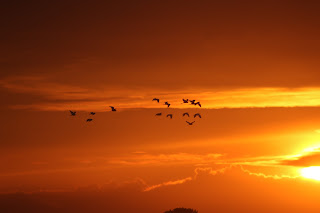
.JPG)
.JPG)









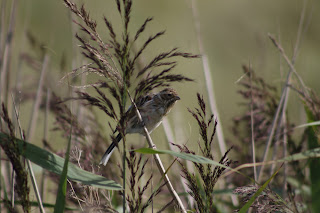


.JPG)
.JPG)
.JPG)



.JPG)






.JPG)
.JPG)

.JPG)


.JPG)

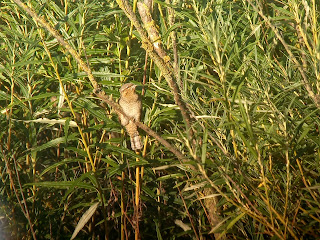
.JPG)




.JPG)
.JPG)

.JPG)
.JPG)
.JPG)
.JPG)
.JPG)
.JPG)
.JPG)
.JPG)




.JPG)
.JPG)

.JPG)

.JPG)
.JPG)
.JPG)

.JPG)







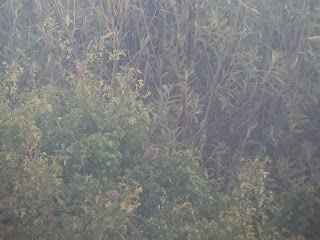

.JPG)

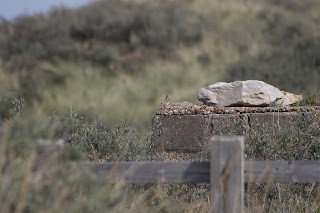







.JPG)






.JPG)
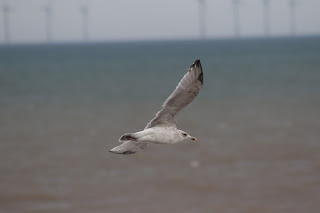










.JPG)
.JPG)
.JPG)
.JPG)




.JPG)
.JPG)

.JPG)
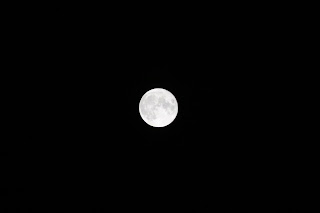
.JPG)
.JPG)
.JPG)
.JPG)
.JPG)
.JPG)
.JPG)
.JPG)





























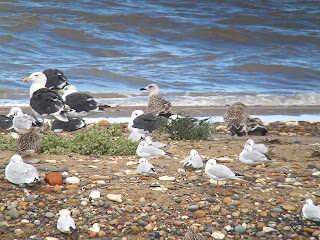


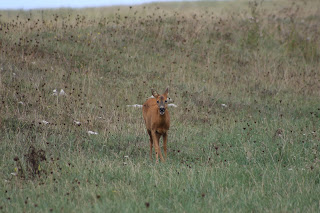










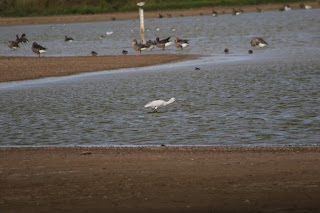





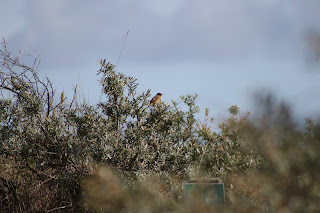











.JPG)









.JPG)




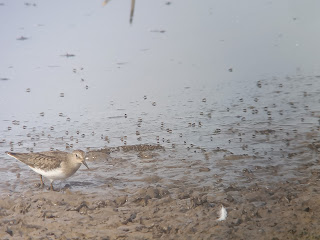
.jpg)







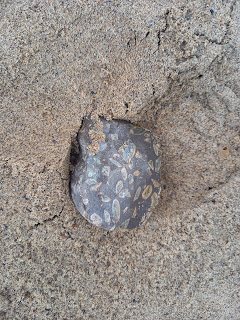
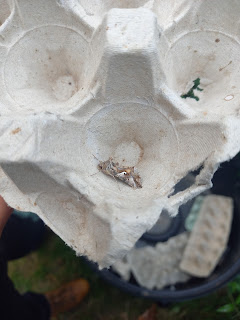
.JPG)

.JPG)
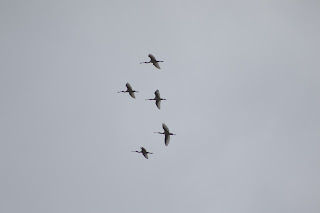
.JPG)
.JPG)
.JPG)
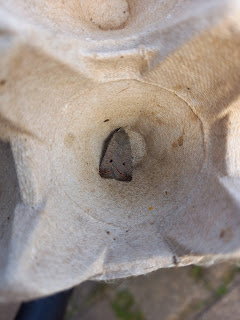
.JPG)
.JPG)













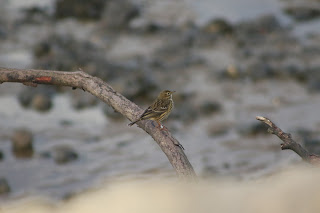














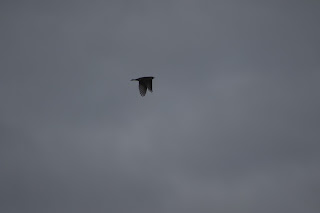


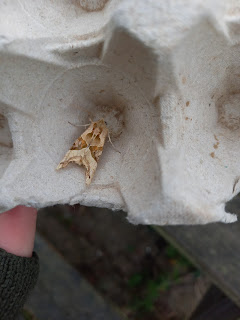





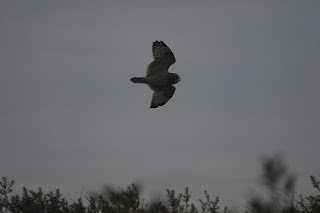




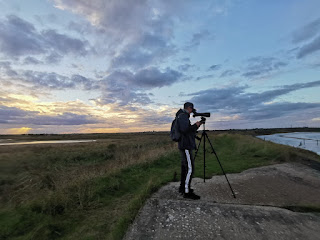

.JPG)
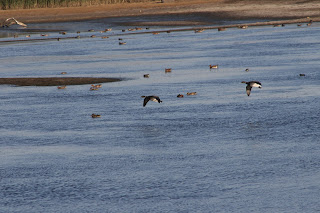
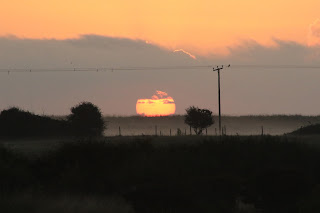



.JPG)
.JPG)
.JPG)




